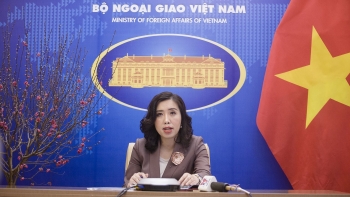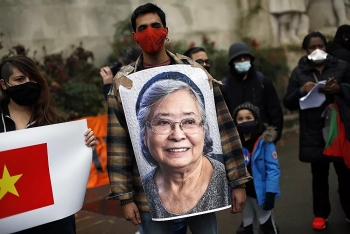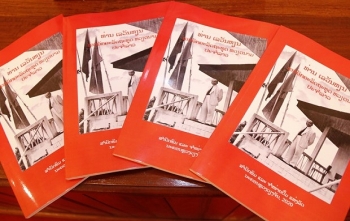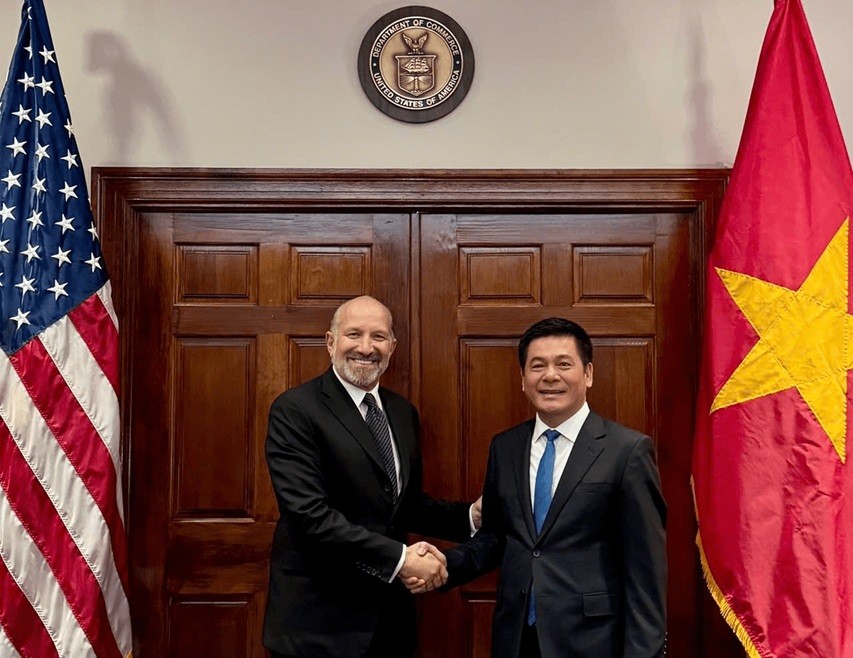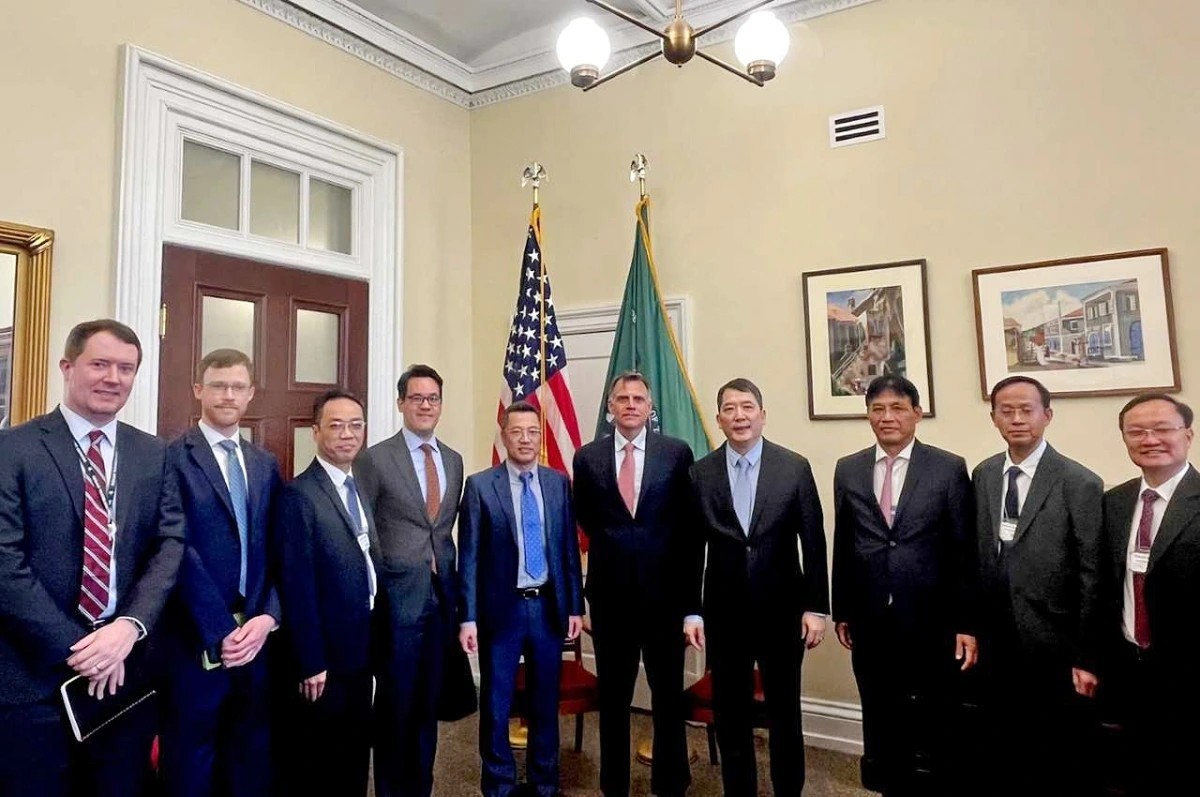Fruitful results of Vietnam-US cooperation in dioxin treatment
| Vietnam supports Agent Orange victims’ fight for justice | |
| French-Vietnamese woman's Agent Orange lawsuit wins activists' support | |
| Book about first Vietnamese Ambassador to Laos introduced to the public |
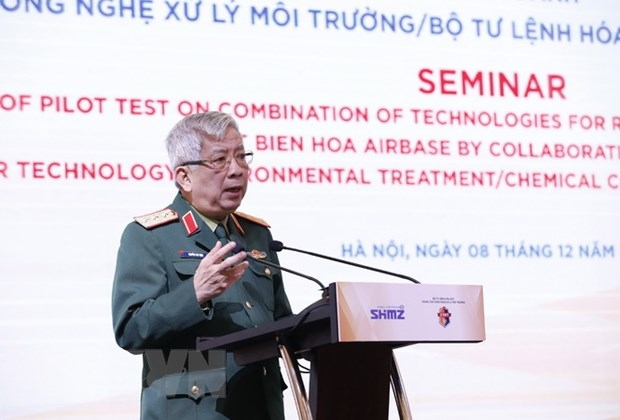 |
| Deputy Minister of National Defence Sen. Lieut. Gen. Nguyen Chi Vinh. Photo: VNA |
With joint efforts of Vietnam’s authorised agencies and the US Agency for International Development (USAID), the treatment of dioxin at Bien Hoa Airbase has been creating a premise for Vietnam and the US to clean up over 500,000cu.m of soil and sediment.
The Bien Hoa Airbase, the former military base of the US in the war, is the the largest dioxin hotspot in Vietnam.
In 2016, the USAID and other Vietnamese authorities completed an assessment of dioxin contamination at Bien Hoa airport.
The results show that there are more than 52 ha with more than 500,000cu.m of soil and sediments contaminated with dioxin which need to be treated and disinfected. The volume of dioxin contaminated soil and sediment in this area is four times higher than the treated volume at the Da Nang airport.
After that, USAID signed an agreement with the Ministry of Defense of Vietnam, pledging to finance the treatment of dioxin contamination in the Bien Hoa Airbase area, using the treatment and containment methods used at the Da Nang airport.
The project to settle dioxin pollution in the Bien Hoa Airbase, launched in December 2019, will be implemented in 10 years with a total investment of USD 390 million.
The first phase has a capital of USD 180 million from non-refundable aid of the US Government and environmental funds from Vietnam’s State budget.
To date, nearly 1,200cu.m of contaminated sediment has been moved to a concentrated treatment area, and more than 5,300sq.m of dioxin-contaminated land in a lake at Gate 2 detoxified and recovered, said Deputy Minister of National Defence Sen. Lieut. Gen. Nguyen Chi Vinh.
The treated area met the requirements of Vietnamese standards, ensuring safety of both people and the environment.
The dioxin treatment outcome is a foundation for the handing over of the land to Dong Nai authorities in the coming time. Another 7.2 hectares in the Bien Hoa Airbase has been handed over to the USAID for treatment and recovery to give land for projects in 2021.
The USAID said that in 2021, it will focus on treating dioxin in areas inside the airport, especially the Gate 2 area and the western part of the airport which are near residential areas.
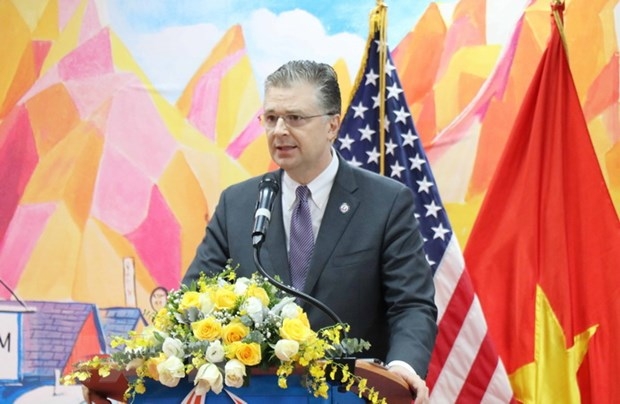 |
| US Ambassador to Vietnam Daniel J Kritenbrink. Photo: VNA |
According to Daniel J. Kritenbrink, Ambassador of the US in Vietnam, the Bien Hoa Airbase dioxin treatment project is a continuation of the successful cooperation project between Vietnam and the US in handling dioxin at Da Nang airport. This is also an event marking an important milestone in order to realize the content of the Joint Declaration of two sides' leaders.
The treatment of dioxin at Bien Hoa airport is a bright spot, proving the strong and effective cooperation between the two Governments, meeting the common aspirations of the people of the two countries.
| The US troops sprayed some 80 million liters of toxic chemicals, 61 percent of which was Agent Orange and contained 366 kilos of dioxin, over nearly a quarter of southern Vietnam’s total area from 1961 to 1971. Figures show that 4.8 million Vietnamese people were exposed to AO/dioxin and about 3 million people became victims. Tens of thousands have died while millions of others have suffered from cancer and other incurable diseases as a consequence of exposure. Many of their offspring suffered birth deformities. |
According to the Ministry of Defense, in order to overcome the consequences of toxic chemicals after the war, in addition to dioxin treatment at Bien Hoa airport, from 2019 to now, the USAID and the National Action Center for Toxic Chemicals and Environmental Treatment (NACCET) have surveyed and decided to invest in a project to support people with disabilities in Vietnam in eight priority provinces, including: Quang Binh, Binh Dinh, Thua Thien-Hue, Tay Ninh, Dong Nai. , Quang Tri, Kon Tum and Binh Phuoc.
The project will support and benefit approximately 100,000 people with disabilities and their families. Funding for the project implementation includes USD 65 million of non-refundable ODA capital of the US Government and VND 75 billion of Vietnamese counterpart fund.
Overcoming the war-left aftermath of toxic chemicals in the environment and humans is a difficult and long-term problem. In addition to Vietnam's efforts, the US Government also needs to increase support, contribute to thoroughly solving post-war problems, and bring the bilateral relations to a new height./.
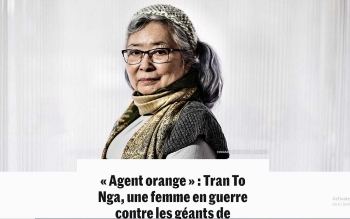 | Trial of lawsuit against US AO/Dioxin producers grabs headlines Several newspapers have been reporting on a lawsuit filed by Vietnamese-French national Tran Thi To Nga against 14 multinational companies for their role in producing ... |
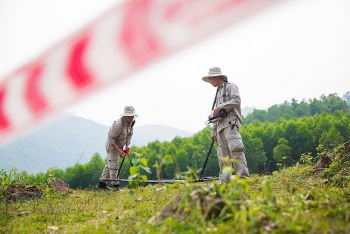 | 500,000 ha of land being detected and cleared of bombs, mines Vietnam has conducted bomb and mine detection and clearance on more than 500,000 ha of land during the 2010-2020 period, in which Defence Ministry units ... |
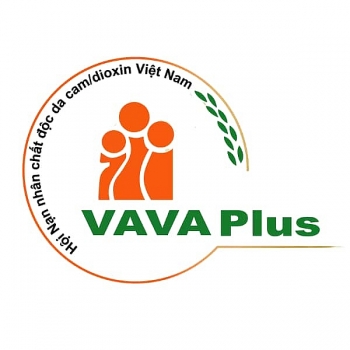 | VAVAPlus: Fundraising app to support AO/dioxin victims launched The Vietnam Association for Victims of Agent Orange (AO)/dioxin (VAVA) on October 6 launched VAVAPlus - a fundraising app for victims of AO/dioxin. |
Recommended
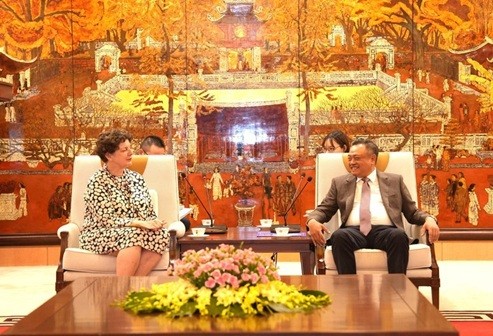 Friendship
Friendship
Diverse Activities to Celebrate the 50th Anniversary of Vietnam - Germany Diplomatic Relations
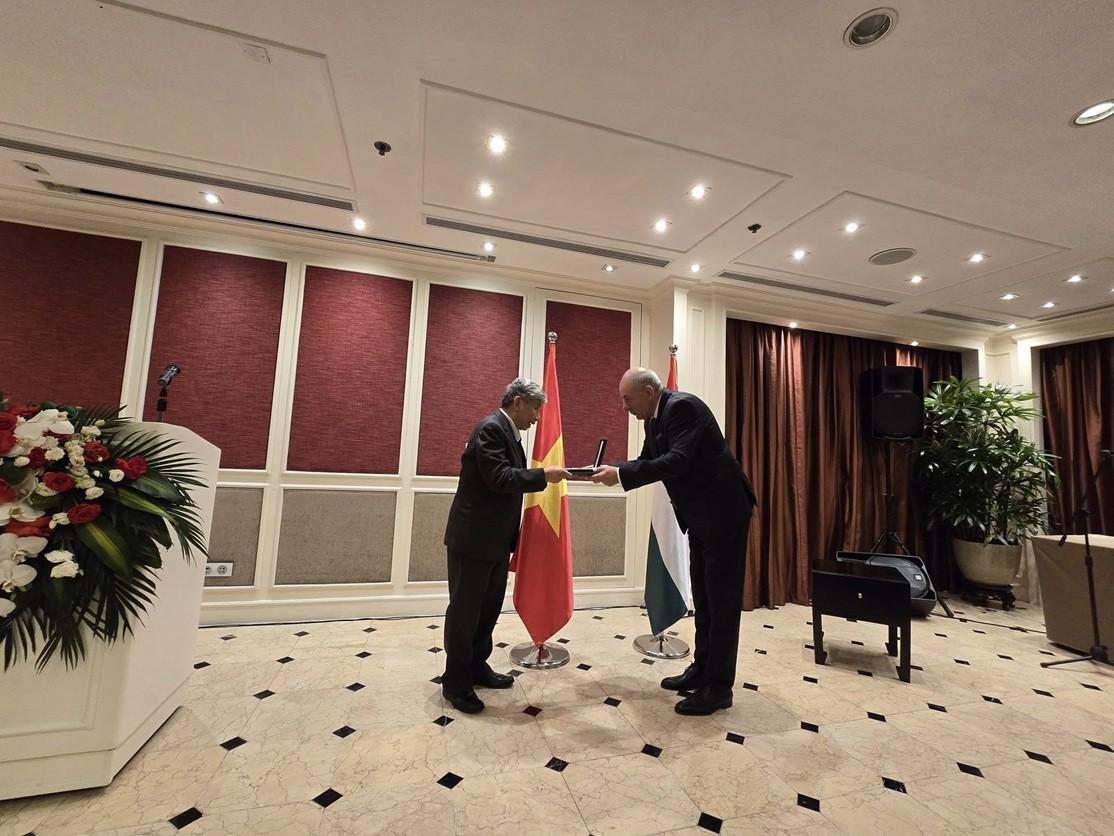 Friendship
Friendship
Dr. Vu Hoai Chuong Receives Hungary's Knight Cross Order
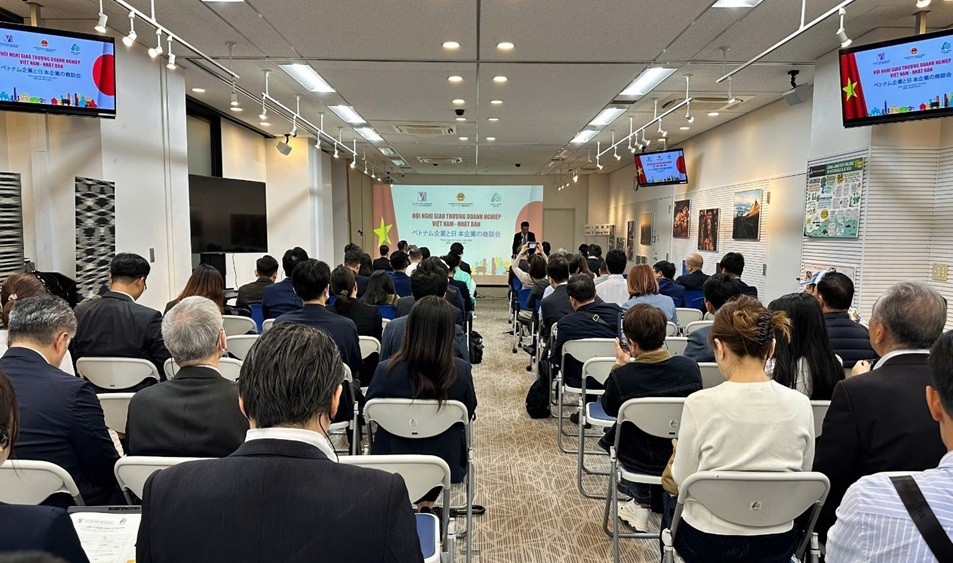 Friendship
Friendship
Promoting Vietnam - Japan Economic Cooperation
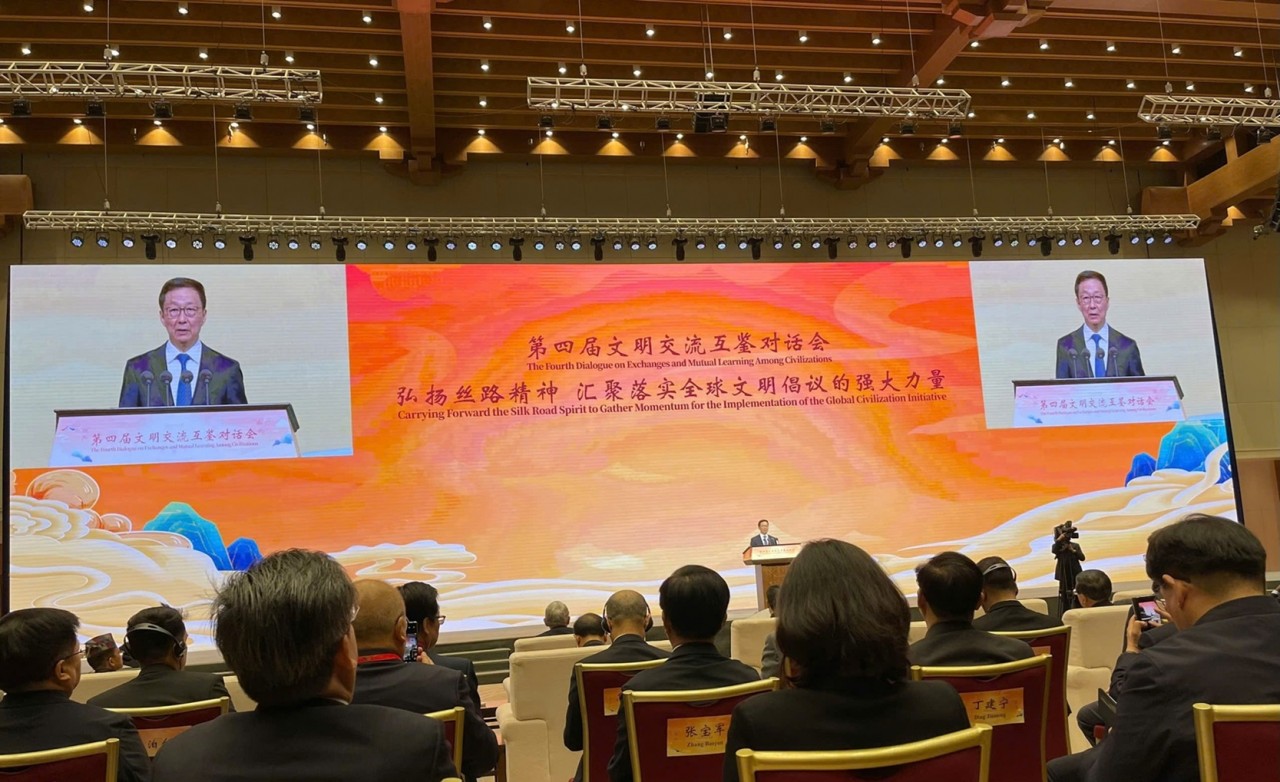 Friendship
Friendship
VUFO Attends Fourth Dialogue on Exchange and Mutual Learning among Civilizations
 Friendship
Friendship
COPI (US) Provides Free Medical Check-Ups for Nearly 1,000 People in Quang Nam
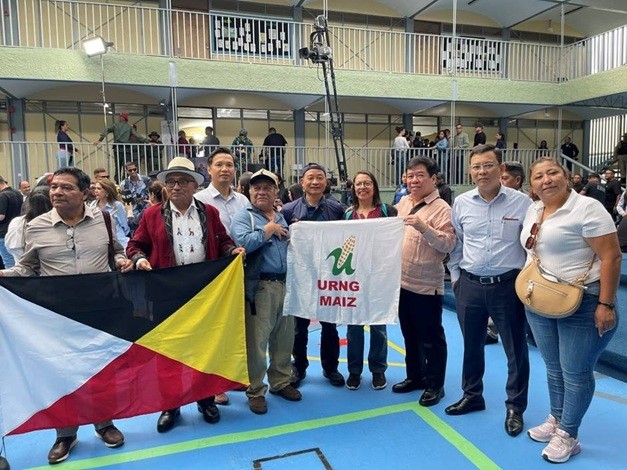 Focus
Focus
Strengthen Solidarity and Friendship Between Vietnam and Venezuela
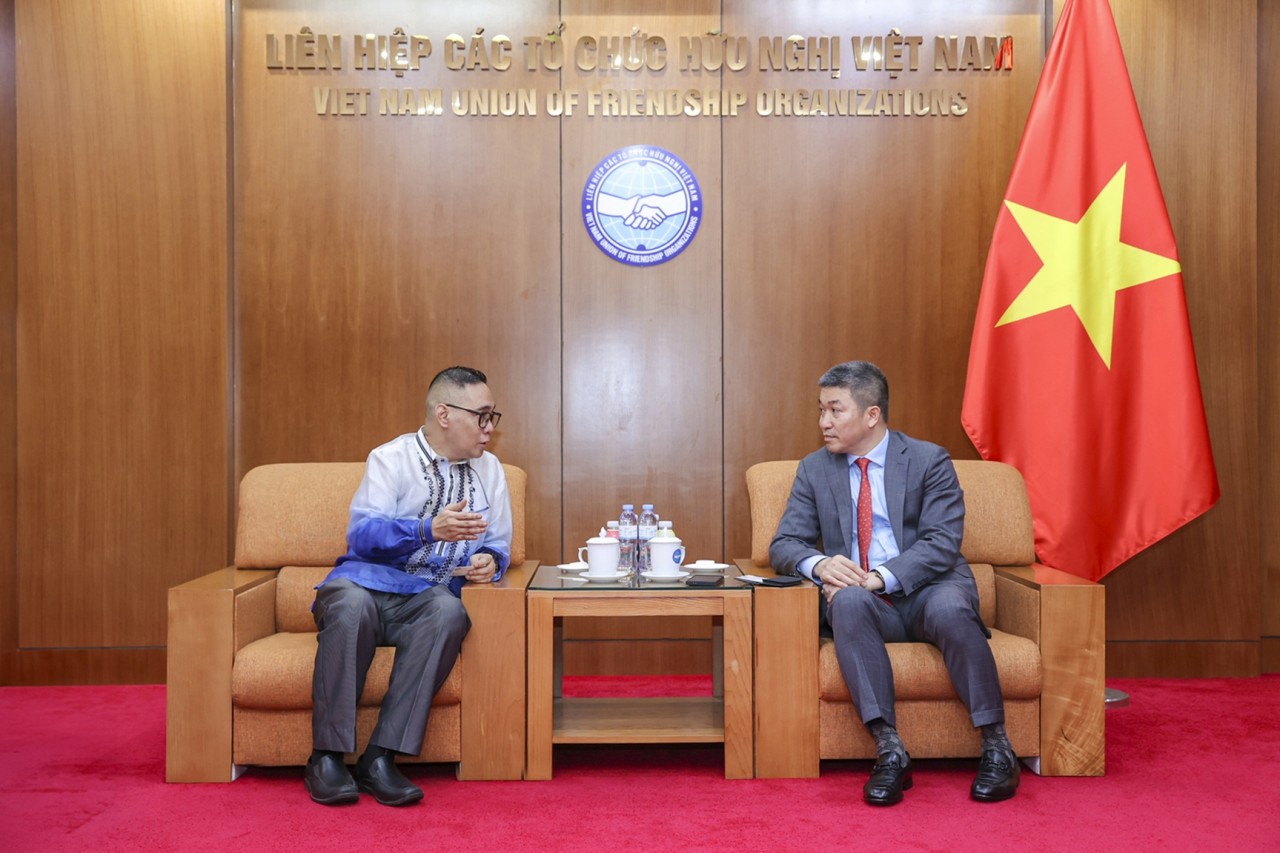 Friendship
Friendship
VUFO Supports Initiatives to Enhance People-to-people Exchanges between Vietnam and the Philippines
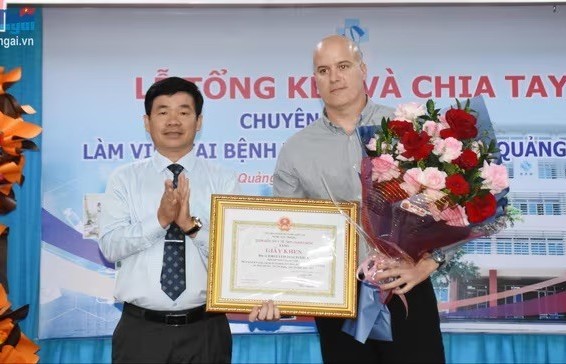 Friendship
Friendship

